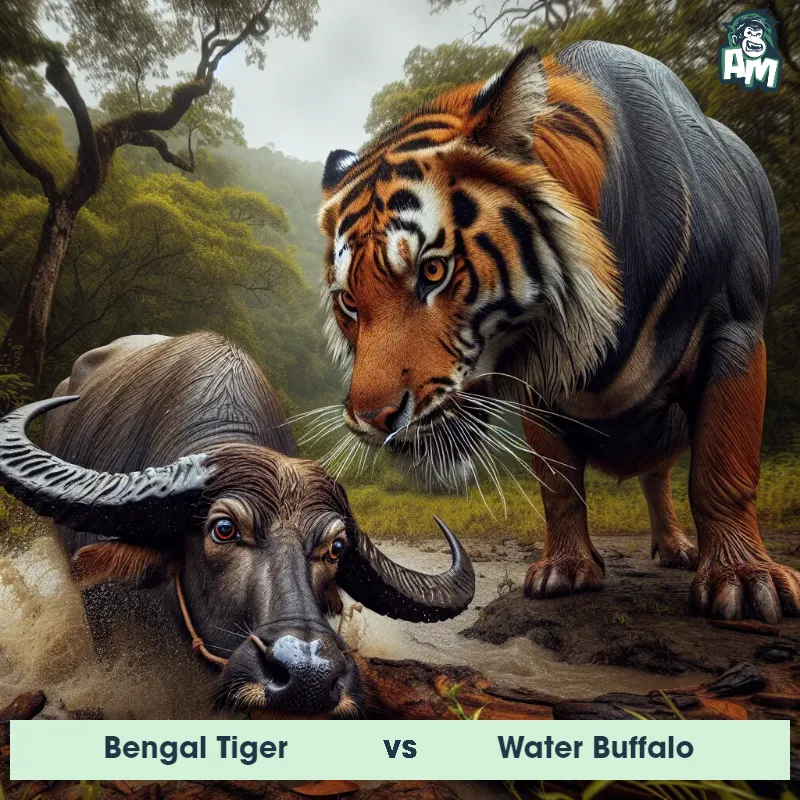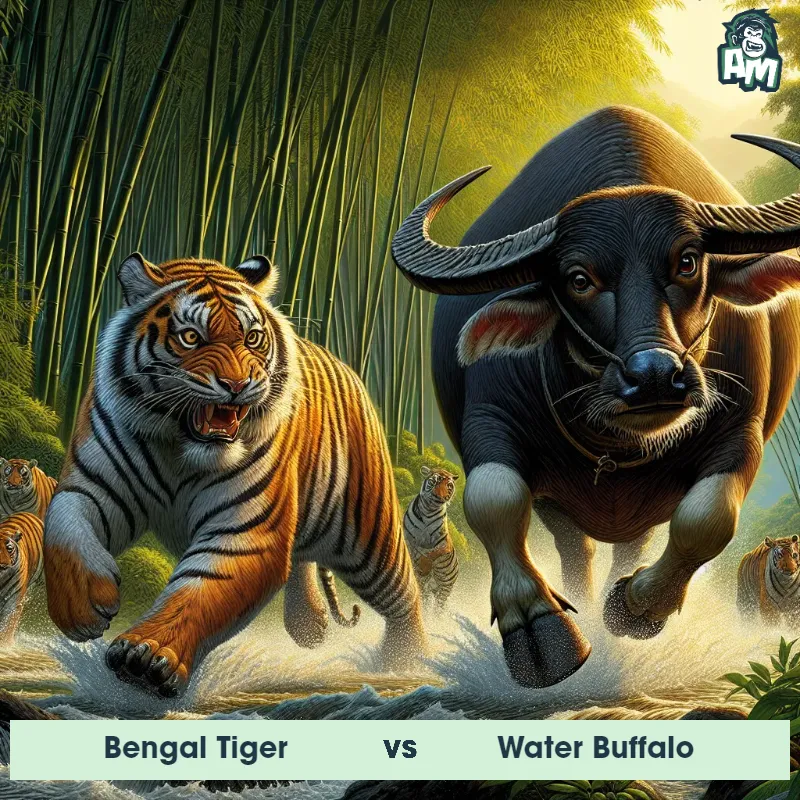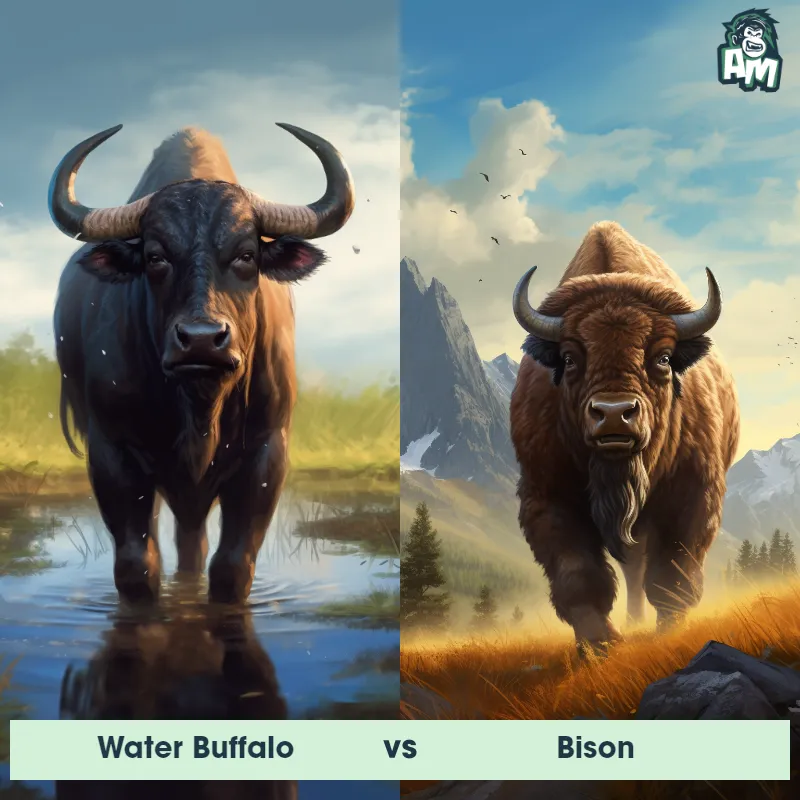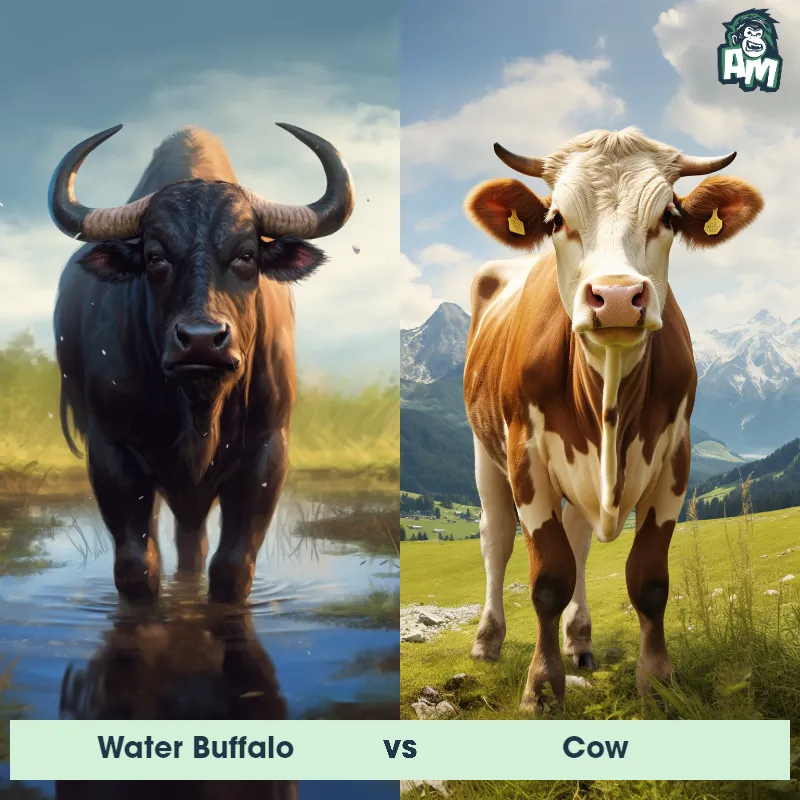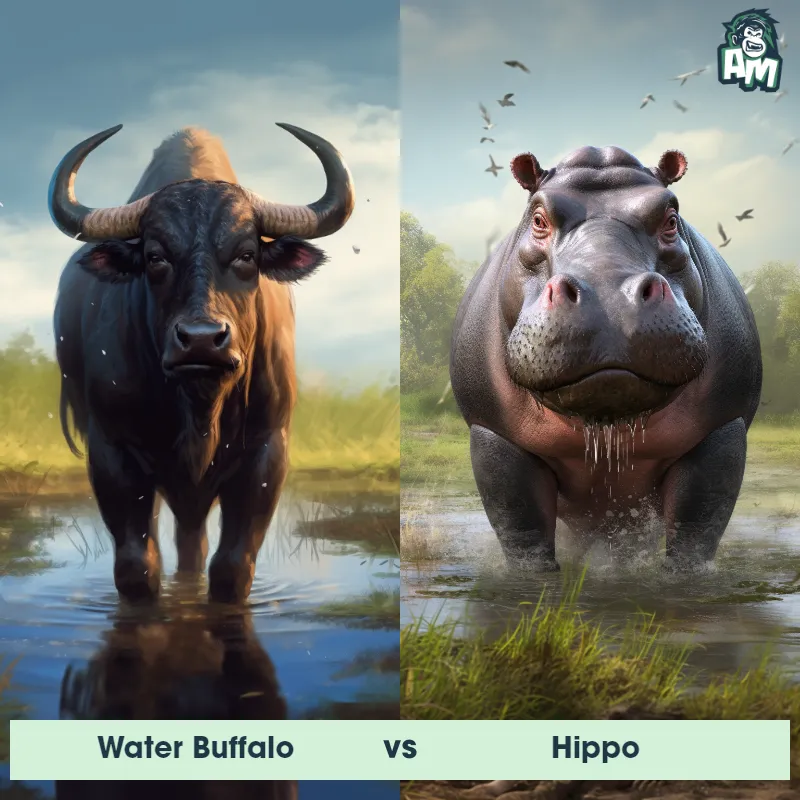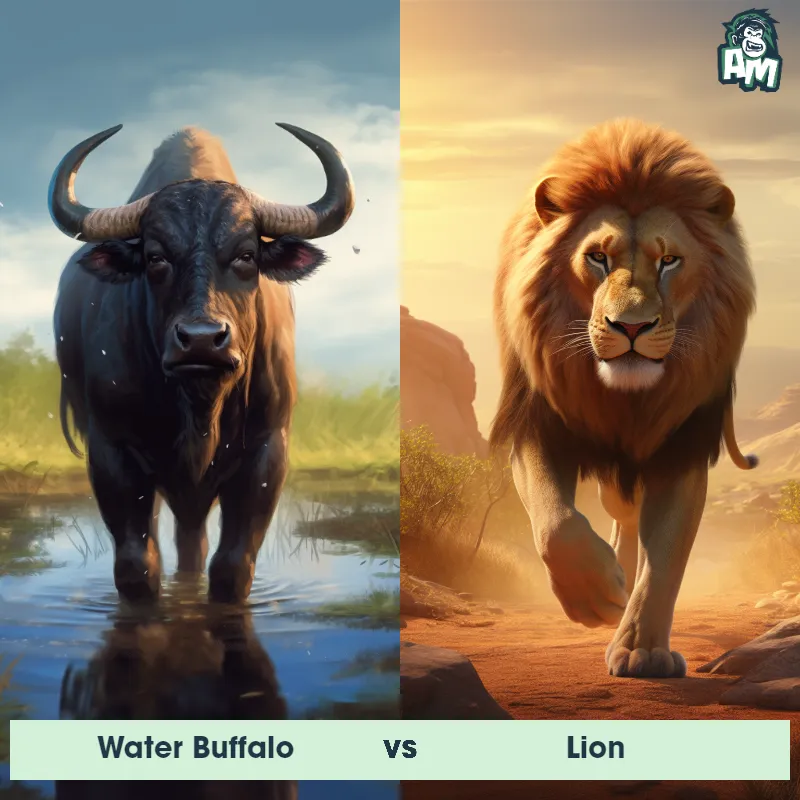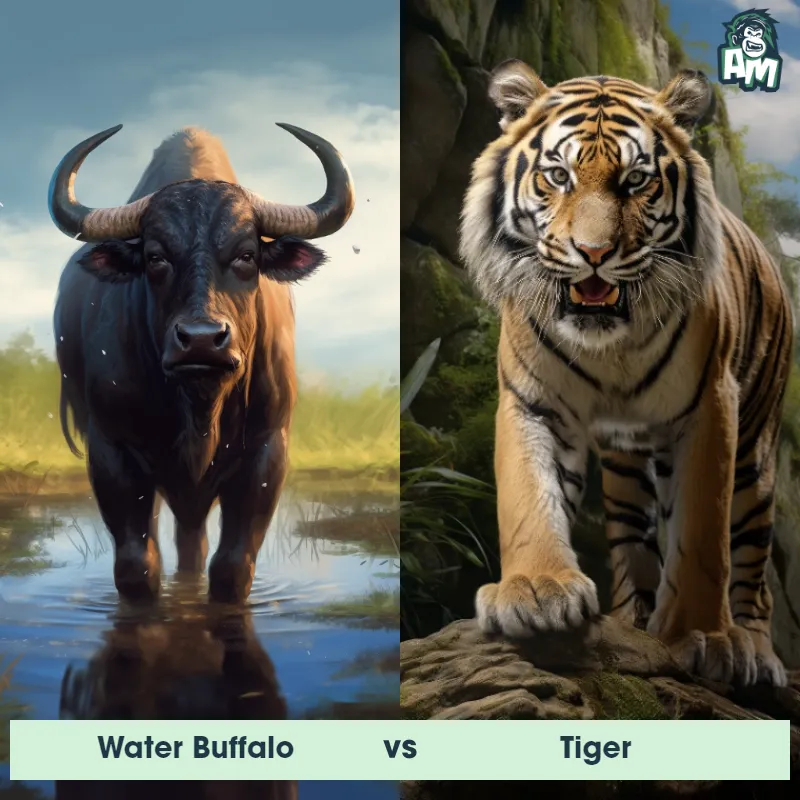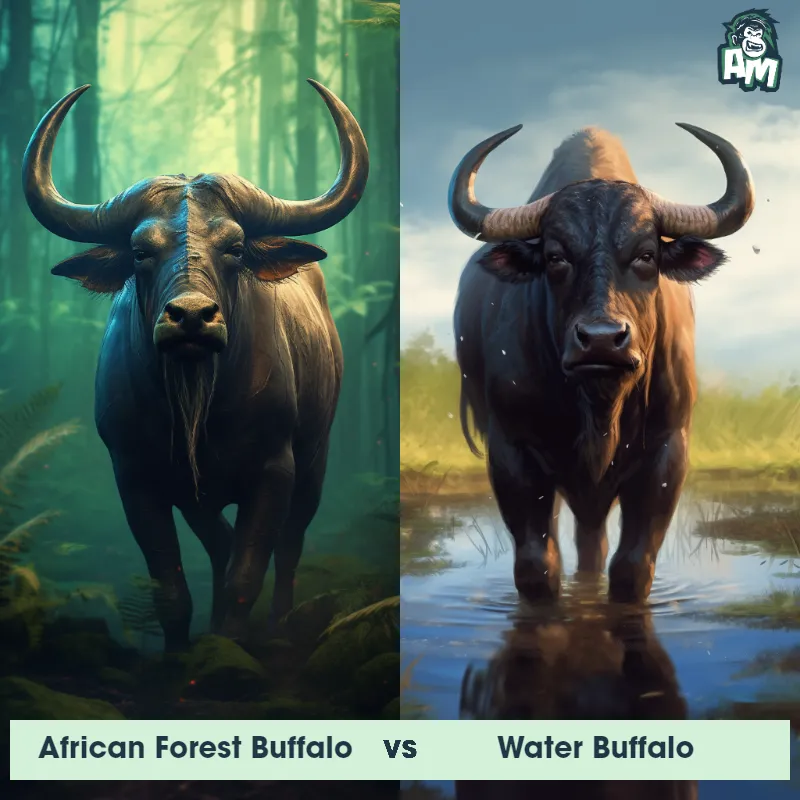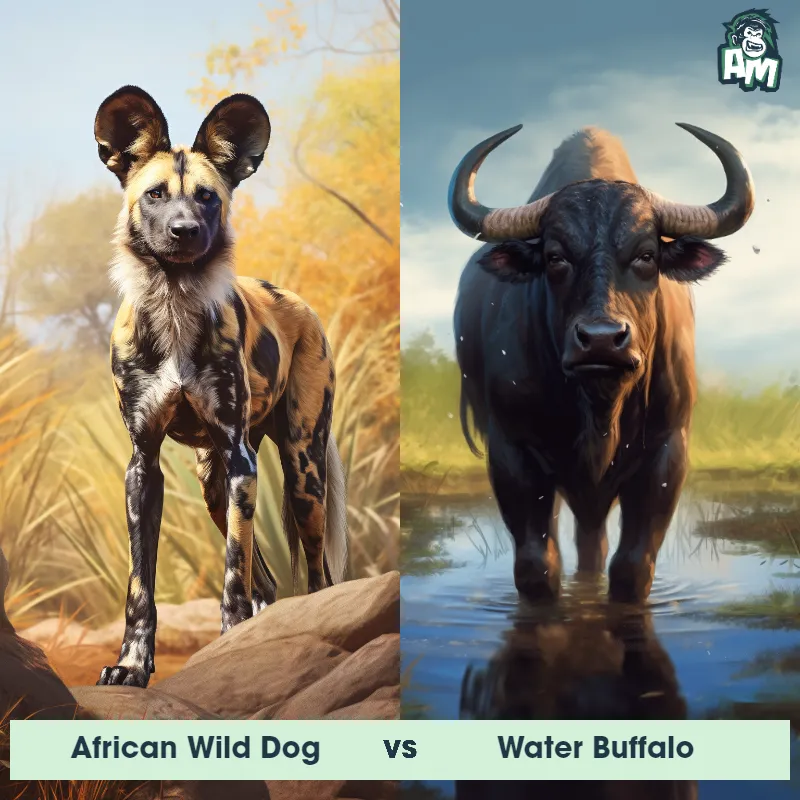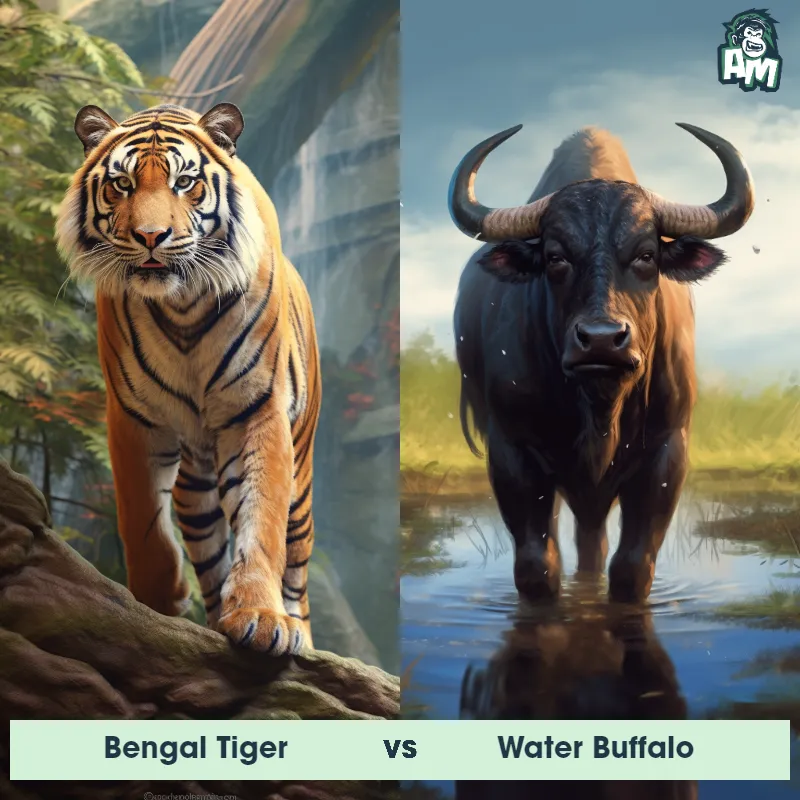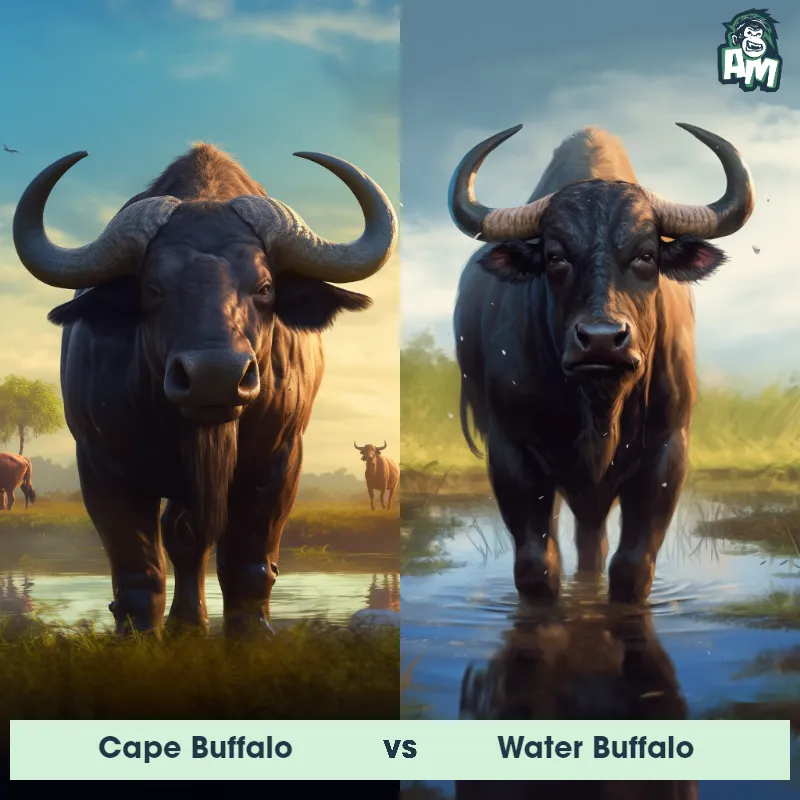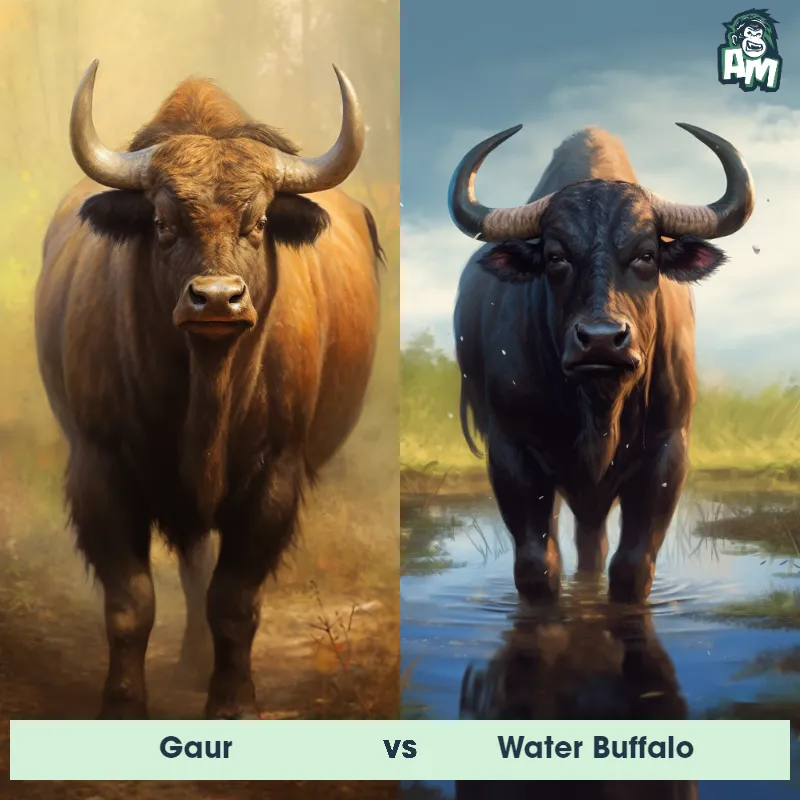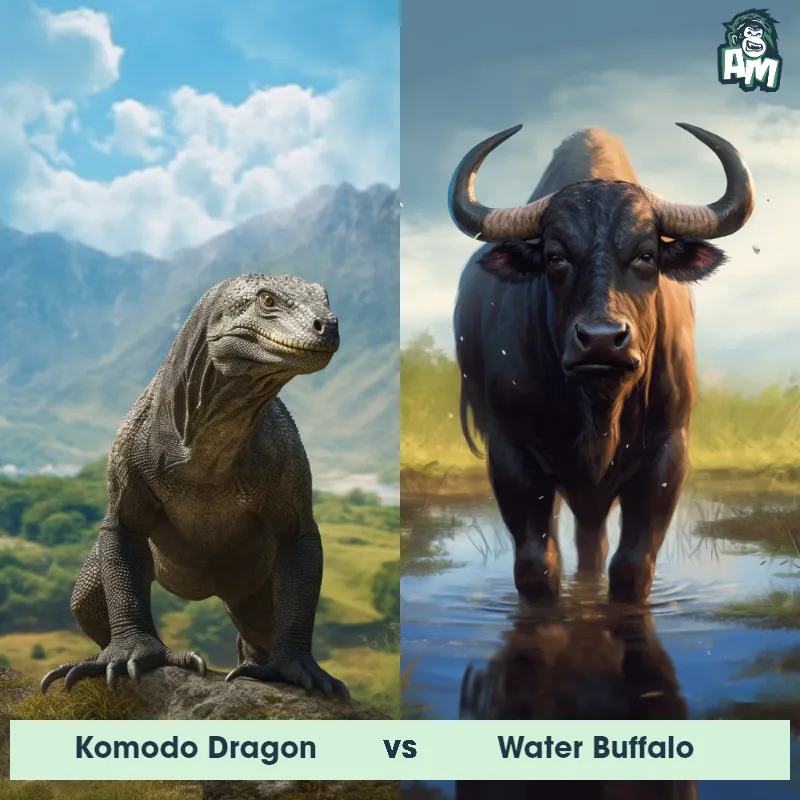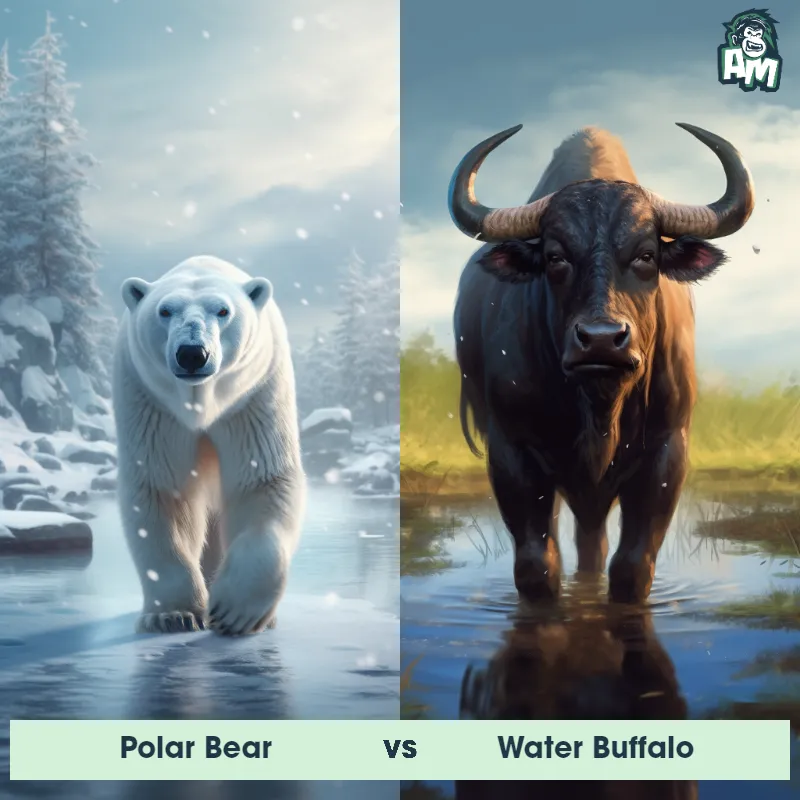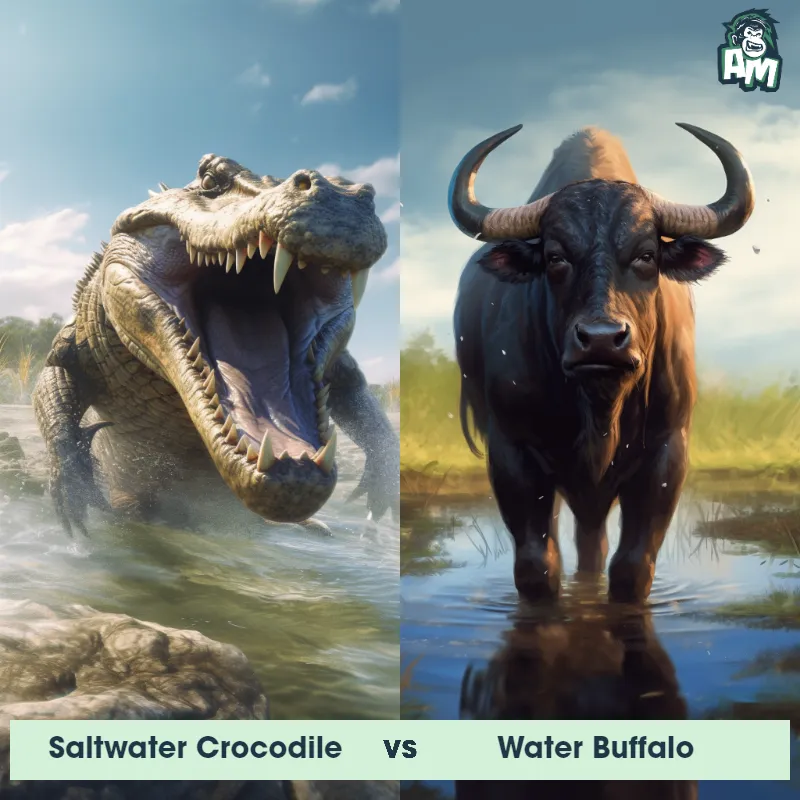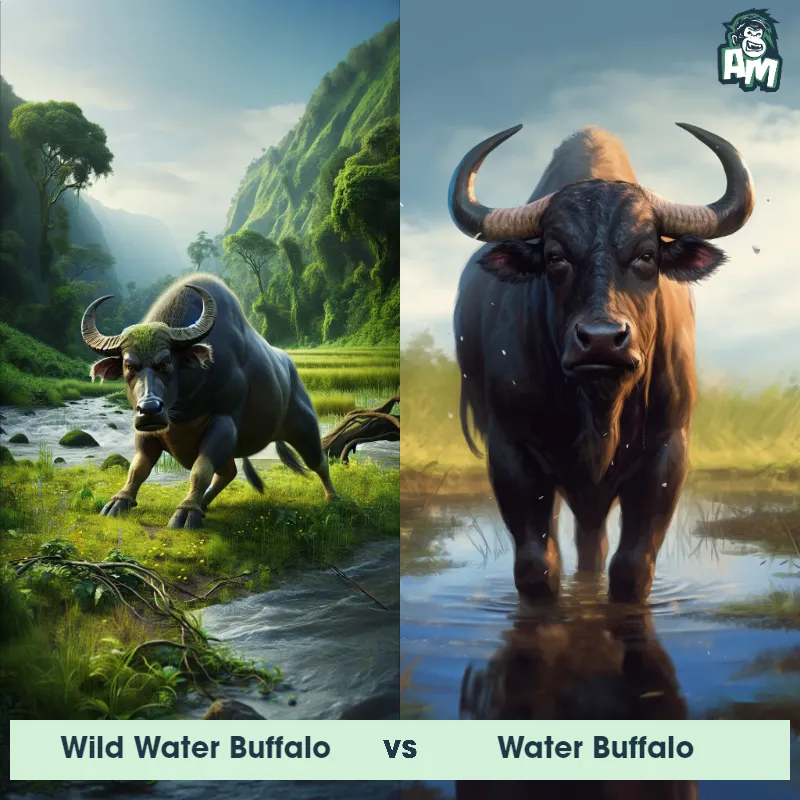The Water Buffalo
The Water Buffalo, also known as Bubalus bubalis, is a large bovine species native to Asia, particularly South Asia and Southeast Asia. These impressive creatures are known for their massive size and strong build, with adult males often weighing up to 2,600 pounds. They have a dark gray or black coat of shaggy hair, and their signature long, curved horns can grow up to 6 feet in length. Water Buffaloes are well-adapted to living in wetland environments and are commonly found in swamps, marshes, and rivers. They are herbivorous animals and primarily feed on grasses, aquatic plants, and various vegetables.
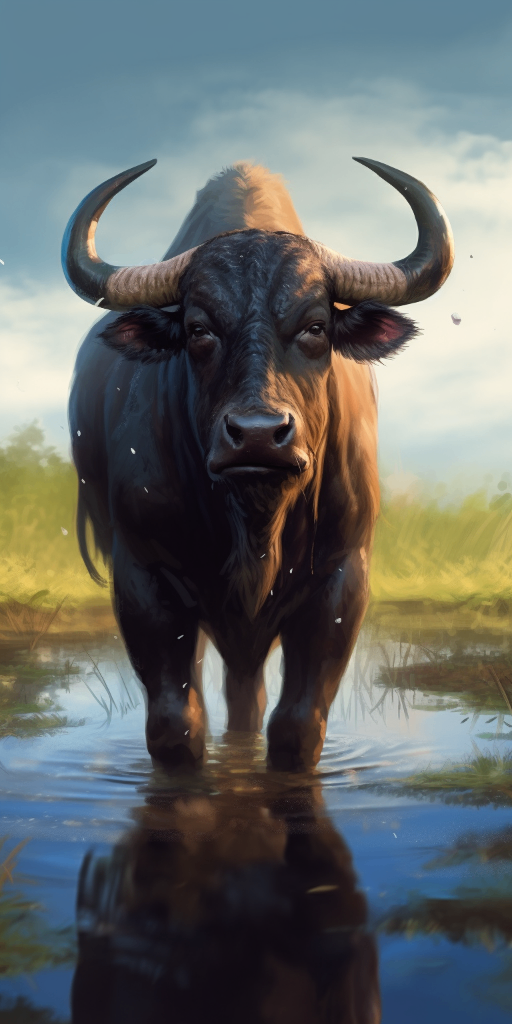
| Water Buffalo | |
|---|---|
| Size | 5-6 feet (1.5-1.8 meters) at the shoulder |
| Weight | Up to 2,000 pounds (900 kilograms) |
| Speed | Speed: 30 mph (48.28 km/hr) |
| Key Strength | Powerful horns and strong body |
| Biggest Weakness | Slow movement and limited agility |
| Scientific Name | Bubalus bubalis |
| Family | Bovidae |
| Habitat | Wetlands, grasslands, and forests |
| Geography | Asia, Europe, Australia, and North America |
| Diet | Herbivorous, primarily grasses and aquatic plants |
| Lifespan | 10 years - 25 years |

The Water Buffalo
The Water Buffalo, also known as Bubalus bubalis, is a large bovine species native to Asia, particularly South Asia and Southeast Asia. These impressive creatures are known for their massive size and strong build, with adult males often weighing up to 2,600 pounds. They have a dark gray or black coat of shaggy hair, and their signature long, curved horns can grow up to 6 feet in length. Water Buffaloes are well-adapted to living in wetland environments and are commonly found in swamps, marshes, and rivers. They are herbivorous animals and primarily feed on grasses, aquatic plants, and various vegetables.
Fun Fact: Water Buffaloes are highly efficient swimmers and are often referred to as the "Black Gold of Asia" due to their ability to work in wet rice fields, transporting heavy loads and plowing through muddy terrains.
| Water Buffalo | |
|---|---|
| Size | 5-6 feet (1.5-1.8 meters) at the shoulder |
| Weight | Up to 2,000 pounds (900 kilograms) |
| Speed | Speed: 30 mph (48.28 km/hr) |
| Key Strength | Powerful horns and strong body |
| Biggest Weakness | Slow movement and limited agility |
| Scientific Name | Bubalus bubalis |
| Family | Bovidae |
| Habitat | Wetlands, grasslands, and forests |
| Geography | Asia, Europe, Australia, and North America |
| Diet | Herbivorous, primarily grasses and aquatic plants |
| Lifespan | 10 years - 25 years |
Match Highlights
Water Buffalo Matchups
We use AI to simulate matchups between the Water Buffalo and other animals. Our simulation considers size, strength, and natural predatory behaviors to determine the most likely outcome.

Can't find the Matchup you want?
Create Your Own MatchupWater Buffalo: Diet, Predators, Aggression, and Defensive Behaviors
What do Water Buffaloes eat?
Water buffaloes are herbivores and mainly graze on grasses, aquatic plants, and crops like rice and sugarcane. They are known to be efficient grazers and can consume large amounts of vegetation in a day.
Do Water Buffaloes have any predators?
In the wild, Water Buffaloes are preyed upon by tigers and crocodiles. However, due to human intervention and domestication, their main threat now comes from diseases and parasites.
Are Water Buffaloes aggressive?
Water Buffaloes are known to be generally gentle animals but can become aggressive if they feel threatened or if their young are in danger. They may charge or attack if provoked.
Do Water Buffaloes fight amongst themselves?
Male Water Buffaloes, especially during mating season, can be territorial and may engage in fights with other males to establish dominance and access to females. These fights can be intense and sometimes lead to serious injuries.
How do Water Buffaloes defend themselves?
Water Buffaloes have several defense mechanisms to protect themselves from predators or threats. They can use their horns and massive bodies to charge and fend off attackers. They can also retreat into bodies of water, as they are excellent swimmers, to escape danger.
What is Water Buffaloes' biggest weakness in a fight?
Despite their size and strength, the biggest weakness of Water Buffaloes in a fight is their relatively slow speed and agility compared to predators or aggressive rivals. They may struggle to evade attacks or quickly maneuver in a confrontation, making them vulnerable in certain situations.
Fun Fact: Contrary to popular belief, Water Buffaloes are not strictly water-dependent animals. They can survive for long periods without access to water, thanks to their unique ability to conserve water by reducing urine production and recycling it within their bodies.
Fun Fact: Water Buffaloes have a remarkable sense of hearing and can rotate their large, rounded ears to efficiently locate the source of a sound, making them highly alert and responsive to their surroundings.



